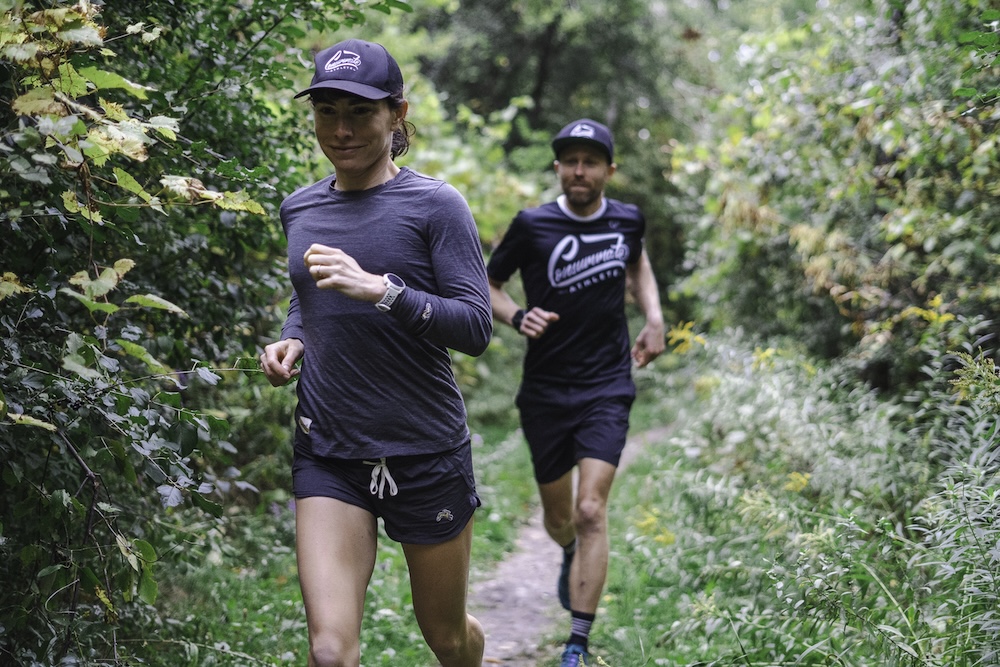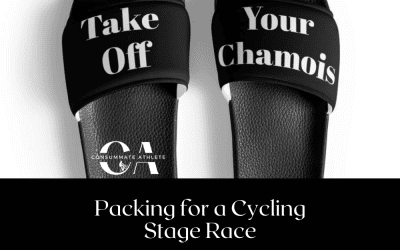It’s summer, which means you ride more, you run more, and you sweat more. And, unless you’re very, very lucky, you chafe more. So, we’re chatting about a few of our favorite chafe-fighting tips for the ride and the run!

Biking Chafe Tips
Assess the Situation:
Does the chafing happen in one small spot or is it happening more at random? Is it chafing or a rash that might be more akin to prickly heat versus a friction induced chafe mark? If it’s a rash, you may need to avoid riding in super high heat when possible, or switching to a lighter weight short. But if it’s chafing, read on.
Trainer vs. Outside Fit:
If you only have ridden your bike indoors on the trainer, you may notice you’re more prone to chafing when you get outside. The opposite is also true when a new bike that’s perfect outside gets put on the trainer for the first time. The way you ride and interact with the bike shifts when you go from trainer to outside and vice versa, so don’t be surprised if you need to raise or lower your saddle or shift it slightly forward or backward to avoid a particular chafe spot.
Saddle / Shorts Choice:
We talk about this a lot in plenty of other posts, but this is just your reminder that if your shorts and saddle aren’t ideal for you, chafing is much more likely to occur. The better your shorts fit and your saddle feels, the less likely that chafe will be a problem.
Use Chamois Cream Properly:
We love chamois cream as a great option for friction fighting on the bike, and talk about it often. But remember, you don’t need a lot to make a big difference. A quarter-sized amount applied to the areas where you tend to chafe is the right way to apply! We don’t recommend applying in bulk directly to your shorts, since you’re more likely to end up with a ’slip and slide’ feeling rather than chafe relief.

A woman and a man, both in athletic wear, jog on a narrow, leafy trail. the woman is in the foreground and focuses intently ahead, while the man follows behind.
Running Chafe Tips
Assess the Situation:
Does chafing happen when you wear a certain type of shorts? Is it localized or all over? Sometimes, one pair of shorts with a slightly weird seam that feels fine in cooler weather can cause issues as you sweat more.
Try Longer Shorts:
For women in particular, swapping between more standard run shorts that have a brief and a short inseam for a longer pair of ‘bike short style’ shorts that are tight-fitting can be helpful. Even a run short with a slightly longer seam can make a different. Just make sure that whatever pair you’re getting has flat seams in the inner thighs. Cheap shorts—especially bicycle shorts—will often have heavier/thicker seams on the inner thighs, which can cause more chafing and make the issue worse. Look for flat stitching or seamless options.
Try a Different Hair Removal Method (or Skip It):
OK, let’s get nitty-gritty for a sec. If you have inner thigh or underarm chafing and you shave regularly, pay attention to when it’s happening. Sometimes, a small amount of stubble can make chafing problems significantly worse. If this is you (or you notice a lot of ingrown hairs or inflamed follicles), you may want to take a break from shaving/hair removal altogether, or try an alternative option like waxing. At minimum, get a fresh, new razor and toss your old, worn out one!
Use a Chafe Stick:
Triathletes and ultra-runners are on to something. Chafe stick is similar to chamois cream, but goes on the same way you’d apply deodorant, leaving you with a thin layer of protection in chafe prone areas. Use on inner thighs, underarms, and even in spots like where your pack sits on your lower back if you ride/run with a hydration pack. It goes on clear but makes a huge difference. During the summer, I use it on almost every single run!





